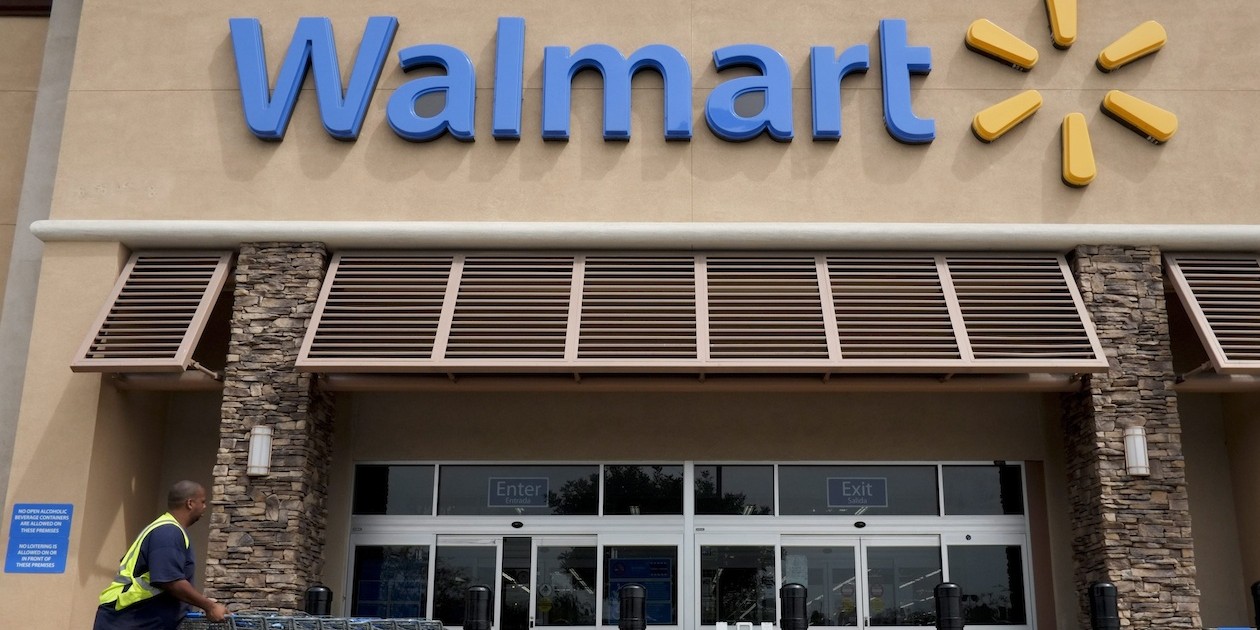Walmart cut its annual earnings outlook Tuesday because its profits are being squeezed by currency fluctuations, higher wages and investments in overhauling its U.S. stores.
The world’s largest retailer also reported an 11.4% drop in second-quarter profit, and lowered its growth forecast for global ecommerce this year.
However, the retailer offered some encouraging news: The investments are helping to perk up traffic and business at U.S. stores. The retailer posted its fourth straight quarter of increases for an important sales measure.
Walmart is facing challenges on all fronts that have resulted in its shares falling 16% this year. Its low-income shoppers are still struggling in an economy that is slowly recovering. The company is also facing increasing competition from online king Amazon.com and dollar stores, which are pulling in shoppers seeking low prices and convenience.
“The changes we need to make require investment, and we’re pleased with the steps we’ve taken,” Walmart CEO Doug McMillon said, according to a transcript of a recorded message to investors. “We made continued progress towards our plan this quarter. Even if it’s not fast as we like, the fundamentals of serving our customers are consistently improving.”
Walmart has been doing a number of things to improve its results. It’s increasing its spending for its online operations to between $1.2 billion and $1.5 billion this year, up from $1 billion last year. It’s opening a string of fulfillment centres dedicated to ecommerce that should speed up delivery and put more items in one box. And it’s testing an unlimited free-shipping service for $50 a year, undercutting Amazon’s popular Amazon Prime, which costs $99 annually.
Walmart’s U.S. division, which accounts for 60% of the company’s total sales, is undergoing a major overhaul under new U.S. CEO Greg Foran.
The company is trying to improve pricing and selection as well as beef up customer service. It raised the minimum wages for its hourly workers to $9 per hour in April. By February 2016, all hourly workers will make at least $10 per hour. It’s part of a $1 billion investment in its workforce that also includes improved training.
The retailer also promises tidier stores and an improved holiday shopping season. Such efforts have helped improve sales and the customer experience.
But the investments are producing pain to the bottom line.
The company, based in Bentonville, Arkansas, earned $3.63 billion in the quarter that ended July 31. That compares with $4.09 billion a year ago.
The world’s largest retailer posted revenue of $120.23 billion in the period, beating Street forecasts. Eleven analysts surveyed by Zacks expected $120.06 billion.
Revenue at stores opened at least a year at its U.S. Walmart stores rose 1.5%. In particular, the measure at its small format stores called Neighborhood Markets was up 7.3%.
The company said it now expects online sales overseas to be up in the mid- to high teens for the current fiscal year because of slowing economies. That compares with the original forecast for growth by a percentage in the mid-20s. The company posted a 16% increase in global ecommerce in the second quarter.











